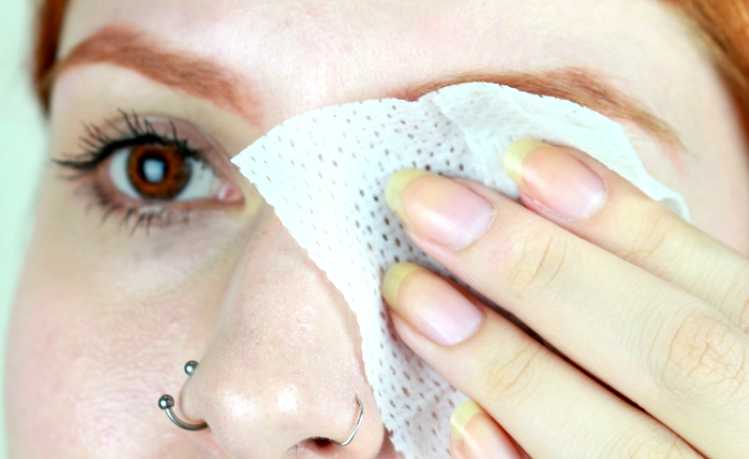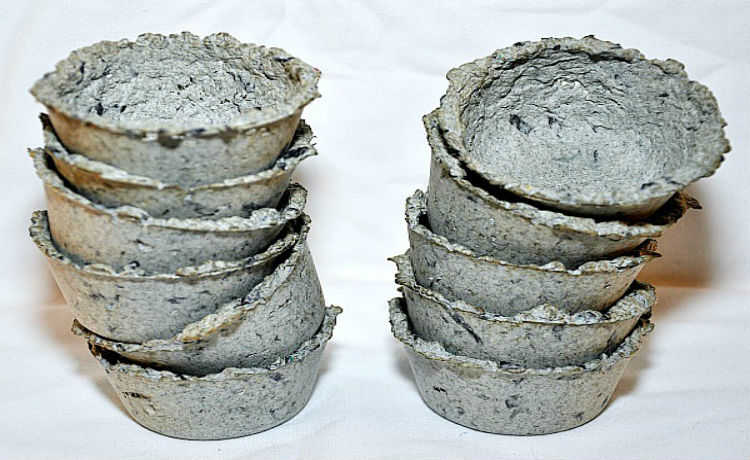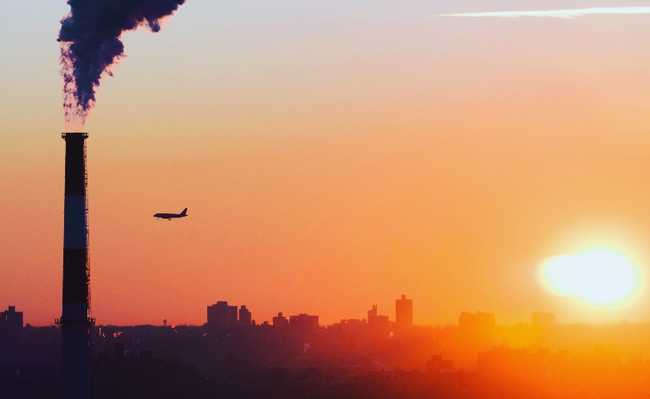What is light pollution?
Understand what light pollution is, which damages the health of humans and animals

In 1994, a magnitude 6.7 earthquake caused a massive blackout in Los Angeles, United States. As a result, many residents called the emergency room in fear, informing them of a “huge silver cloud” in the sky. They claimed that she could be the cause of the blackout or even be part of an alien invasion. The cloud was nothing more than the Milky Way, which they were seeing for the first time. The story is not surprising considering that about 2/3 of North Americans and half of Europeans cannot see our galaxy at night because of light pollution.

Light pollution started thousands of years ago very simply, with fire and candles, but of course such impacts were very low. However, with the invention of electricity in the 19th century, and with the appearance of the first public lighting at the end of that century, our world was taken over by the luminosity of artificial light.
Light pollution is the excess of artificial light emitted by large urban centers. It can be emitted in different ways, such as external lights, advertisements and, mainly, public lighting. The impact of light pollution became better known under pressure from amateur astronomers in the United States in the 1980s. They complained about the loss of visibility when trying to observe stars. Furthermore, light pollution has other consequences, affecting our health and ecosystems, making it a great harm to all citizens.
Types of light pollution
Brightness of the sky (sky glow)

It is the glow of the night sky or parts of it. Its most common cause is artificial lights that emit accumulated light pollution that can be seen miles away in space. According to the International Dark Sky Association, from Los Angeles, the glow of the lighting can be seen over 300 km away. This phenomenon is worse in areas with a high concentration of air pollution. The use of misdirected sodium lamps causes an orange colored effect. If the brightness tends towards white, it is due to the use of mercury lamps, which are more harmful to the environment.
intrusive light (light trespass)
This type of light pollution occurs when lighting from one room invades the other. For example, when light from street lights invades your room and does not allow it to be completely dark at night.

Obfuscation (glare)
It occurs when excessive light is not properly protected and shines horizontally, reducing visibility, causing discomfort and even momentary blindness. An example of this type of light pollution occurs when a car is driving with high beams in the opposite direction to us.

Disorder (light clutter)
This light pollution is caused by excessive groups of lights that can create confusion, distract from obstacles, and cause accidents. Disorder can be observed on roads where lights are poorly positioned and end up distracting or disturbing drivers, contributing to the occurrence of accidents. The city of Las Vegas, in the United States, has excessive colored lights, being an example of light disorder.

Excessive lighting (over illumination)

It is the excessive use of light, generating waste of energy. In the United States, excess lighting is responsible for an approximate waste of 2 million barrels of oil per day. As can be seen in the image, the light used to illuminate the building was not necessary.
Impacts
Light pollution causes several impacts to living beings, affecting the migratory, food and reproductive cycles of different species of animals and plants. The spider orb weaver, for example, uses the attraction that artificial lights exert on insects to capture them, building their web close to artificial light sources and destroying the balance of an entire ecosystem.
Another impact is the negative influence on migratory routes of birds - several nocturnal migrant species have their orientation mechanisms interfered and become disoriented when crossing brightly lit areas. This interference causes these birds to bump into buildings, mountains, ground or even each other. In 1954, approximately 50,000 birds died after following a US air force lighthouse and flying directly to the ground. Some birds believe that spring came early and begin to reproduce prematurely or even migrate before the correct time because of the great lighting.
Leatherback turtles make their nests on the beach and when the hatchlings are born, they are instinctively guided by the reflection of the light from the stars and the moon to make their way towards the sea. However, instead of going to the oceans, they follow the lights of the hotels and streets towards the mainland and end up dying of dehydration, devoured by a predator or even run over by cars.

Animals with bioluminescence - which is the production and emission of light by a living organism and which has several functions (camouflage, communication and attraction of prey and partners for reproduction) - are also affected. In brightly lit areas, this phenomenon loses its function. For this reason, in various regions of the world, fireflies are increasingly scarce. Female fireflies use bioluminescence to attract males from up to 45 meters away, but with the presence of artificial light, this tool is impaired, reducing the species' reproduction.
Some plant species do not flower if the night length is shorter, while others flower prematurely. Photosynthesis induced by artificial light can produce abnormal growth and a lag in the flowering and resting periods of plants.
Other impacts on the environment are the disorientation of bees, the increased vulnerability of zooplankton to fish, the invasion of species in cities, such as giant moths in Asia, and the exposure of nocturnal animals to predators, limiting their feeding time and reproduction.
Problems for humans
Apart from the impacts mentioned, we humans also suffer from this intense exposure to light, after all, we are also animals. Too much outside light invades our homes and disturbs our sleep. Also, lighting attracts some insects that can carry diseases.
Night light causes changes in sleep and confuses the circadian rhythm, which is the period of approximately 24 hours on which the biological cycle of practically all living beings is based. This rhythm influences our sleep patterns, temperature and hormone production. This confusion has been linked to sleep disorders, depression, obesity and mood disorders.
Recent studies also suggest that prolonged exposure to artificial light may increase the risk of developing certain types of cancer, such as breast and hormone-related cancers. Research has indicated that women who work at night are more likely to develop breast cancer, and in 2007, the International Agency for Research on Cancer (IARC) called night work a "likely human carcinogen."
Visualization of our galaxy with the naked eye is also affected by light pollution and, nowadays, those who were born and lived in big cities have no contact with the universe. Too much light wasted skyward blurs our vision and causes the image to lose quality so that only the brightest stars are visible. See the figure below for the constellation of Orion seen in urban areas (right) and in areas free from light pollution (left).

Amateur astronomers suffer a lot from this impact, requiring them to go further away from cities, in poorly lit and higher places. This lighting also interferes with astronomers' equipment, such as the spectrograph, which are instruments that measure how the light emitted by an object is dispersed in different colors. With this measurement it is possible to define the mass, chemical composition, temperature and luminosity of a body in space, however, light pollution interferes with the measurements.
Additionally, some elements used in lamps to stay lit are highly polluting and can cause great environmental impacts when discarded. Among these elements are mercury, lead, cadmium, strontium and barium.
Not to mention that light pollution is a huge waste of energy and money. Approximately a quarter of all energy use is directed towards light generation. A survey carried out in Austria in 2008 found that around 30-50% of the government's contribution to the greenhouse effect was due to street lighting, of which approximately 30% is wasted lighting the sky. The consequences of this waste are numerous, as much of this energy consumed comes from polluting sources such as thermoelectric plants, which consume natural resources and release pollutants such as carbon dioxide into the atmosphere, in addition to being a burden on the budget.
Solutions
Fortunately, compared to other types of pollution, light pollution is one of the most easily remedied. The correct lighting is the one in which the light illuminates the area that is interested in lighting. If each light source reflects down light that would go sideways and up, it improves the illumination of the area with less power and energy consumption. The illustration below exemplifies this measurement.

Replacing with more efficient light bulbs reduces energy consumption and provides more light. For the public lighting system, one of the most efficient lamps is the high and low pressure sodium vapor lamps, which have a long lifetime, low energy consumption and excellent efficiency compared to other models. LED lamps have been pointed out as another option as they consume little energy and are directed, however, these lamps emit a stronger light than common lamps. The installation of presence sensors in some places also reduces energy consumption, lighting the area only when it needs to be lit.
Some measures are already being taken. In Paris, for example, from 1 am to 7 am, lights in shops, offices and the facades of the city of lights must be off, except for tourist areas such as the Eiffel Tower, which can be lit.

Flagstaff, Arizona (USA), is the first modern large city with dark skies, in which measures were widely taken to reduce light pollution, such as directing lights and protecting them so that light does not stray and limiting lighting issued per acre. Still, light pollution increases by 20% each year, mostly due to the association between safety and light.
In Brazil, there is a need for national legislation, setting parameters in order to prevent and correct light pollution. In addition to normative measures, awareness of the population is essential. The National Astrophysics Laboratory has prepared a handout that alerts and provides information on light pollution and ways to combat it. They present a "golden rule" that we should all follow: "Lighten only what you need and only for as long as necessary."
Actions such as those mentioned can save energy, money and reduce damage to the environment. And not just these benefits. Decreasing this pollution can give us the ability to look beyond ourselves and glimpse the immensity of space.
See amazing footage shot by photographer and astronomer Mark Gee for International Dark Sky Week.










